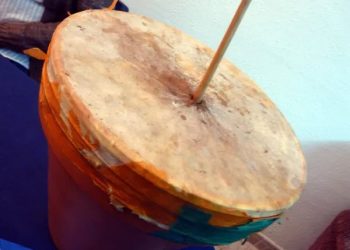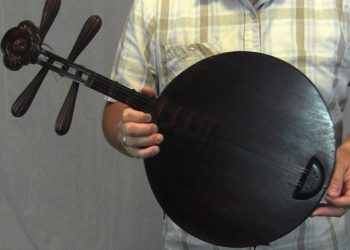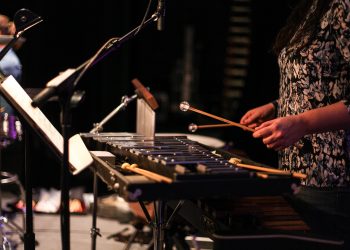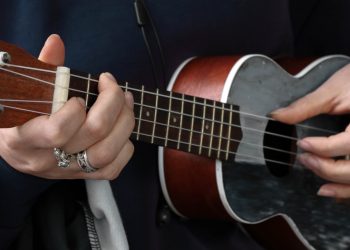Music has been a source of joy and inspiration for centuries, and the world of musical instruments is as diverse and colorful as the melodies they produce. Whether you are a seasoned musician or a curious listener, exploring the wide array of instruments available can be a fascinating journey of discovery. In this article, we will delve into the world of music to highlight the top 19 musical instruments that start with the letter S.
From the soulful sound of the saxophone to the hypnotic rhythms of the steel drum, the letter S is home to some of the most iconic and beloved instruments in music history. Whether you are interested in classical music, jazz, or world music, you are sure to find an instrument on this list that will pique your interest and inspire you to learn more.
We will explore the unique history, construction, and sound of each instrument, as well as notable musicians who have helped to shape the world of music with their skills on these instruments. From the well-known to the obscure, this list will showcase the beauty and diversity of musical instruments that begin with the letter S. So grab your headphones and get ready to embark on a musical journey like no other.
1. Sabar
The Sabar is an African drum used in traditional music. It has been around for centuries and is still widely played today. The instrument typically consists of a single-headed cylindrical body, with leather stretched over the top to form a playing surface. It is usually held between the legs or on the lap while playing, though some models can be stand-mounted.
In addition to its use as an accompanying rhythm instrument, the Sabar can also produce melodic sounds when struck with sticks or hands. This makes it a versatile tool that can provide both percussion and melody in musical performances. Additionally, different sizes of Sabar drums will produce different tones – small drums create higher pitch notes while larger drums create lower pitched ones.
PlayingSabars requires skill and practice; they are often taught as part of cultural education within certain communities. In Senegal, for example, young people learn how to play them from their elders in order to keep the tradition alive and passing down knowledge from generation to generation. Moreover, mastering this unique instrument gives players access to various performance opportunities at festivals and other events throughout Africa.
It’s clear that the Sabar plays an important role in African culture and music– providing joyous rhythms for social gatherings as well as spiritual ceremonies alike.
2. Sampler
A sampler is another type of musical instrument widely used in African music. This electronic device records and stores sound samples, which can be manipulated and played back to create new sounds or rhythms. Samplers are often used to emulate traditional instruments such as the Sabar drum, but they also allow for a great deal of creativity when constructing unique pieces of music.
Samplers come with many knobs and buttons that control different parameters of a sample’s pitch, tempo, length, attack and decay times as well as volume levels. By playing around with these settings, musicians can create completely original compositions – blending multiple samples together to form more complex arrangements. Additionally, sampling technology allows producers to mix in elements from various genres such as hip-hop or rock into their work.
The beauty of using samplers lies in its versatility – it enables artists to experiment with a wide range of sonic possibilities while still maintaining an authentic sound quality. Furthermore, modern day digital samplers have become increasingly user friendly making them accessible to both professional and amateur musicians alike.
Thanks to advances in technology over the years, today’s producer has access to powerful tools that provide creative freedom like never before – allowing them to express themselves without boundaries and push the envelope on what’s possible musically.
3. Santoor
Moving on from the modern sampler, another traditional instrument used in African music is the santoor. This stringed percussion instrument originated in India and has been adapted for use in many different cultures across the world. It consists of a wooden frame with up to 72 strings stretched over it, which are then struck by two mallets – one held in each hand. The sound produced is often described as ‘plucked’ or ‘strummed’, giving it an almost harp-like quality.
The santoor can be played solo or alongside other instruments such as drums, providing a unique texture to any ensemble setting. Its versatility allows musicians to create intricate melodies that range from tranquil and meditative pieces to upbeat and lively tunes. Additionally, its smaller size means it’s easy to transport and perform live – making it ideal for festivals or street performances.
Because the santoor has so many strings, there are countless possibilities when it comes to creating new sounds; allowing players to explore various techniques like vibrato, glissando and arpeggio amongst others. As well as this, it also makes use of sympathetic resonance (which occurs when adjacent strings vibrate together), resulting in beautiful reverberations that enhance the overall experience for both performers and listeners alike.
Using traditional instruments such as the santoor helps keep alive ancient musical traditions while enabling exploration into more contemporary genres; ultimately inspiring creativity through limitless sonic possibilities.
4. Sarinda
Continuing our exploration of traditional instruments, we come to the sarinada. This two-stringed bowed lute was developed in East Africa and is often likened to a miniature violin in terms of its appearance and sound. Its small size allows it to be comfortably held between the player’s knees while they pluck and bow each string simultaneously with their hands – resulting in a unique blend of tones that are both soothing yet vibrant at once.
The instrument’s versatility enables musicians to incorporate different playing techniques such as vibrato and tremolo into their performance; creating haunting melodies which can range from slow ballads to upbeat dance tunes. As well as this, the sarinada’s distinct timbre adds depth and texture to any ensemble setting; making it an invaluable addition for ensembles performing genres like world music or jazz.
Due to its portability, the sarinada is perfect for street performances or live gigs; allowing players to take their music wherever they go. Moreover, accompanying oneself on the instrument provides greater freedom when exploring new musical ideas – inspiring creativity through experimentation.
Whether used solo or alongside other instruments, the sarinada continues to remain popular amongst professional and amateur musicians alike; showcasing just how truly versatile this little instrument can be!
5. Sarangi
The sarangi is a fascinating bowed stringed instrument that has its roots in the Indian subcontinent. Its distinct sound has been likened to that of a human voice, with many believing it to be able to express emotions like no other instrument can. This captivating quality makes it an essential part of traditional and modern music alike; often being used as a solo or accompaniment instrument for both vocalists and instrumentalists.
What’s more, this remarkable instrument allows musicians to quickly switch between various modes while playing – making their performance even richer. The use of slides, meend (glissando), hammer-ons and pull-offs provides great versatility when creating intricate melodies characterised by strong rhythmical patterns. Furthermore, because the strings are stretched over a bridge rather than fretted on fingerboard, players have an unlimited range of notes at their disposal – allowing them to push musical boundaries further still!
Another benefit of playing the sarangi is how portable it is due to its relatively small size. Whether travelling around or performing live, this unique instrument gives performers greater freedom which can lead to wonderful performances full of life and passion. With such immense potential within reach, one cannot help but be inspired when playing the sarangi!
Indeed, from professionals who’ve mastered its complexities through to those just beginning their journey with the Sarangi – anyone can appreciate its beauty and uncover new possibilities for creativity every time they pick up this incredible instrument.
6. Sarod
The sarod is another beloved bowed stringed instrument originating from the Indian subcontinent. Its sound is characterized by a bright, metallic timbre that can range from soft and mellow to loud and powerful – making it ideal for accompanying both vocalists and instrumentalists alike. With its wider tonal possibilities than the Sarangi, players of the Sarod are able to express their emotions with greater freedom through improvisation – creating music that has an enduring quality.
Unlike other instruments, the strings on a Sarod are not stretched over a bridge but instead have frets (called kharaj) along its fingerboard which allows players to produce specific notes with precision. This feature makes playing melodic patterns much easier as well as giving performers more control when developing complex rhythms or performing intricate solos. It also offers great versatility when combining different techniques such as slides, hammer-ons and pull-offs in order create dynamic musical passages.
In addition, this captivating instrument is quite light in weight compared to similar instruments – allowing musicians to transport it easily from one place to another without any hassle. As such, it’s become popular among many professional musicians who often use it during live performances where they need something small yet capable of producing beautiful sounds quickly and effortlessly!
All these features make the Sarod an incredibly special instrument; granting anyone who plays it access to endless possibilities for creativity while providing immense joy every time they pick up this remarkable instrument!
7. Saxophone
https://www.youtube.com/watch?v=oz0-2-Sr_jY
The next instrument on our list is the saxophone – a beloved wind instrument that has been featured in many different genres of music over the years. It’s instantly recognizable sound and its ability to provide soulful melodies or lively solos have made it an essential part of any ensemble, from jazz combos to full symphonies.
Unlike other woodwinds like clarinets and oboes which require reeds for playing, the saxophone utilizes a metal mouthpiece with a single-reed attached as well as several tone holes along its body which can be opened and closed by pressing keys located near the player’s fingertips – making it very easy to use! Furthermore, unlike stringed instruments, it doesn’t rely on frets for producing notes but instead relies solely on finger placement; allowing players greater freedom when performing improvisational passages or creating intricate rhythms.
This versatile instrument also offers great flexibility in terms of playability; making it suitable for both solo performances and accompanying larger groups depending on what kind of sound you’re looking to achieve. Additionally, because of its lightweight construction, it is much easier to transport than bulky horns such as trumpets or trombones – giving performers more options when they need something portable yet powerful enough to fill up large spaces with beautiful music!
The saxophone is truly an amazing instrument that continues to captivate audiences around the world today thanks to its timeless appeal and immense versatility. Whether you are just starting out your musical journey or if you’ve been playing for years, this fantastic horn will always bring joy into your life every time you pick it up!
8. Scottish Small Pipes
Continuing on our exploration of musical instruments, let’s take a look at the Scottish small pipes. These traditional bagpipes are smaller in size than their more well-known cousins, and they’ve become popular due to their unique sound that can fill any room with a beautiful melodic drone. They’re also easier to hold and play, making them ideal for musicians who want to learn how to play this ancient instrument without having to worry about lugging around larger models.
The small pipes consist of three drones – two tenor and one bass – which add an extra layer of complexity when combined with other instruments such as fiddles or accordions. The chanter is where all the melodies come from, so it’s important that it’s tuned correctly in order for everything else to stay in tune; this requires skill and practice but once mastered makes playing these pipes much simpler! Additionally, because these pipes don’t require constant air pressure like some other types do (like uilleann) they can be played while walking or dancing – allowing performers to move freely while still providing accompaniment.
This instrument has been used for centuries by both folk musicians and classical composers alike, demonstrating its versatility and adaptability over time. It’s perfect for those looking for something unique yet familiar enough not to feel out of place among other instruments; plus it doesn’t take up too much space either! Whether you need background music for your favorite traditional dances or just want something special during your next impromptu jam session, the small pipes have got you covered!
9. Serpent
An equally impressive and unique instrument is the serpent. This ancient wind instrument has a long, curved shape that resembles a snake – hence its name! It was widely used in Europe during the Renaissance period, particularly in sacred music, but it also gained popularity among military bands and other musical groups. In modern times, this instrument has found its way into traditional folk music as well as some types of jazz.
The sound produced by a serpent can be quite distinctive depending on how much air is blown into it; generally speaking, however, it’s known for producing deep low tones with plenty of resonance. As such, it often serves as an accompaniment to other instruments like brass or woodwinds which are better suited for playing higher melodies. The combination of these two sounds creates a truly harmonious blend that adds depth and richness to any song or composition.
Serpents are usually made out of metal tubing wrapped around a wooden core; nowadays there are even plastic versions available too. Despite their simple construction, serpents require great skill to play due to their large size and complex mechanisms inside them. That said, they’re not difficult to learn if you have patience and dedication – so why not give one a try?
By learning and mastering the serpent you’ll gain access to a whole new world of creative possibilities perfect for adding texture and atmosphere to your compositions. Not only that but you’ll find yourself surrounded by friends who share your passion – whether they’re fellow musicians or simply curious onlookers enchanted by the beautiful music coming from your instrument!
10. Shaker
Another great tool for creating unique sounds is the shaker. This percussion instrument consists of a container filled with small items that produce sound when shaken or tapped. It can be made out of anything, from gourds to metal cans – and you don’t even need to use traditional materials! You could fill a jar with coins, marbles, beads, sand, rice – almost anything will do as long as it produces the desired effect.
The possibilities are endless when it comes to making music with shakers; they can provide rhythmic accompaniment or act as an interesting percussive element in any piece. Shakers come in all shapes and sizes too, so you’re sure to find one that suits your needs perfectly. Whether you want something light and delicate like a tambourine or something heavier like a cabasa – there’s bound to be an option available.
When playing with a shaker you should always remember to keep the rhythm consistent; this ensures that each note blends seamlessly into the next without any awkward interruptions. Additionally, pay attention to how hard you hit each item inside the shaker – different levels of intensity can create varying degrees of volume and tone depending on what type of material is used. Experimenting with these subtle nuances allows musicians to craft intricate patterns and add depth to their compositions.
Using a shaker opens up exciting avenues of expression and exploration that would otherwise remain unexplored. From jazz ensembles to traditional folk tunes – no matter what style or genre you prefer – adding some extra percussion through shaking will definitely spice things up!
11. Sitar
Now moving onto the sitar, a stringed instrument originating in India. This classical instrument is characterized by its long neck and resonant tones that create an unmistakable soundscape. It is usually played with a pick called a mizrab in order to pluck strings which are then bent or vibrated at intervals to produce certain notes. The sitar also has additional sympathetic strings running alongside the main ones; these provide resonance and help generate complex chords as well as subtle nuances of pitch and timbre.
The sitar can be used for both solo performances and ensemble playing, making it one of the most versatile instruments around. Its distinct sound lends itself perfectly to many genres from traditional Hindustani music to jazz fusion – there’s something truly captivating about this ancient instrument! Additionally, thanks to its unique tuning system, musicians can easily experiment with different scales and modes while still staying within the bounds of Indian classical tradition.
Because it requires precise technique and skillful use of fingering techniques, mastering the sitar takes time and dedication. But those who do so will discover how rewarding it can be when all the elements come together just right: the drone-like hum of sympathetic strings merging seamlessly with intricate melodies created through fingerpicking on the main strings. There’s nothing quite like experiencing firsthand what makes this remarkable instrument so special!
Producing beautiful sounds through artistry, creativity and technical mastery – anyone who plays the sitar knows that it’s worth every second spent learning its intricacies. Whether you choose to explore traditional Indian ragas or find new ways to express yourself musically – adding some extra flavor courtesy of the sitar is sure to take your performance up a notch!
12. Slit Drum
The slit drum, also known as a log drum or tongue drum, is an instrument with a deep and resonant sound that has been used for centuries in various parts of the world. It differs from other drums due to its unique construction – instead of being made from one solid piece, it consists of two wooden slabs which have been hollowed out and then connected together with either metal or rope strings. When struck by hand or mallets, these tongues create distinct tones depending on how hard they are hit; this allows musicians to play intricate rhythms as well as melodic lines.
What makes the slit drum so interesting is that each instrument can produce multiple notes at once thanks to its design. As such, it’s often used in ensemble pieces where different players need to collaborate closely in order to make everything come together harmoniously. On top of that, because there isn’t much tuning involved (aside from adjusting the tension on the strings) musicians can easily switch between playing simple melodies and complex polyrhythms without having to tweak anything else.
In addition to providing accompaniment in music performances, the slit drum can also be employed as part of rituals or ceremonies. Its iconic low rumble creates an atmosphere perfect for invoking spiritual energy or honoring ancestors; plus, since no electricity is required you can take your performance anywhere!
Ultimately, whether you’re looking for something new to add into your repertoire or just want a great way to relax after a long day – learning how to play the slit drum will definitely offer some therapeutic benefits. So don’t hesitate–give this ancient instrument a try today!
13. Snare Drum
Building on the foundation of the slit drum, another type of musical instrument to explore is the snare drum. With its distinct sound and dynamic capabilities, this percussion instrument has been a staple in various genres for centuries. Its main feature is a set of snares – metal wires stretched across its bottom head that vibrate when struck and produce an intense buzzing noise. This allows players to create complex rhythms as well as short bursts of energy with ease; it’s a great tool for adding intensity to any piece.
What makes playing the snare so fun is its versatility – from jazz and rock to funk and reggae, there are countless ways you can use this instrument to get creative. You could choose to keep things simple by just tapping out basic beats or go all-out by incorporating intricate rolls and flams into your performance; either way, the end result will be sure to impress! Plus, because it comes in both acoustic and electronic varieties there’s something for everyone here too – no matter what style you prefer there’ll definitely be a snare drum out there suited for you.
Another advantage is how easily portable this instrument is – unlike other drumsets which require bulky stands and hardware, all you need is one stand or surface (plus a few sticks!) To move around with it won’t take up much space either making it ideal if you plan on traveling frequently with your setup.
So whether you’re looking for an easy way to add excitement into your music or want to challenge yourself with some more technical pieces – learning how to play the snare drum should provide plenty of opportunities for growth!
14. Soprano Saxophone
The soprano saxophone is a popular instrument for all types of music from jazz to classical. It has a bright, vibrant sound that can be heard clearly above the other instruments in an ensemble. With its curved shape and smaller size compared to other saxophones, it’s also easier to hold and play than most other instruments in this family.
One thing that makes playing the soprano sax so fun is its versatility – you have complete control over how much expression you put into your performance with techniques like vibrato, staccato articulation and dynamic range. This allows players to create unique sounds depending on what they’re trying to convey musically; whether it’s light-hearted swing or melancholic blues, there’s no limit when you get creative with this instrument!
Because of its medium size, the soprano sax is also great for beginners who are just getting started on their musical journey as well as experienced musicians looking for new challenges. Its manageable size means that kids can learn quickly without experiencing too much physical strain – making it ideal if you’re just starting out. On the flip side, advanced players will still find plenty of opportunities to explore different styles and nuances within each phrase – ensuring endless hours of enjoyment regardless of experience level!
Whether you want something airy and melodic or loud and proud – learning how to play the soprano sax should provide plenty of inspiration for any musician.
15. Sousaphone
The sousaphone is an important musical instrument used in marching bands and brass ensembles. It’s a large, circular horn that typically has three valves and a bell-shaped end. This intricate design allows the sound to travel further than most other instruments, making it well suited for outdoor performances.
Its name comes from John Philip Sousa, who popularized this type of tuba during his tenure as director of the United States Marine Band between 1880 and 1892. The instrument was designed by C.G. Conn Company in 1898, giving musicians greater control over their sound even when playing outdoors or competing against loud drums and cymbals.
Today, sousaphones are often seen in school marching bands across the country where they play both melody lines and bass parts within complex arrangements. Beginning players usually start with smaller models since larger sizes have more demanding ranges while requiring more air pressure to produce proper sounds.
Despite its size and weight, many professional musicians still choose to use a sousaphone as part of their ensemble because of its powerful yet elegant tone quality that can be heard clearly over any crowd noise or outdoor environment.
16. Spanish Guitar
The Spanish guitar is an iconic instrument, often associated with a wide variety of musical styles. Its sound has been used in many different genres, from traditional folk music to modern rock and jazz. It’s also a beautiful instrument that adds elegance to any performance.
At first glance, the Spanish guitar looks similar to other acoustic guitars but there are some distinct differences when it comes to its construction and playing style. The body shape of the Spanish guitar is oval-shaped and features six strings which are tuned lower than usual; this gives the instrument its unique tone quality. Additionally, unlike electric guitars, these instruments do not have pickups or effects pedals so all of the tones come directly from the player’s fingers.
To play a Spanish guitar well requires great skill because the hand position is much closer together than on most other types of guitars; more pressure needs to be applied to each string as well as less movement required for chords and melodies. This can make learning how to play quite challenging at first but once mastered, it will provide players with endless possibilities for creative expression.
Playing a Spanish guitar allows musicians to explore both deep emotions as well as fast rhythms by combining intricate fingerpicking techniques with powerful strumming patterns. As such, it’s no surprise why this beloved instrument continues to captivate audiences around the world today!
17. Spoons
The spoons, a lesser known but equally captivating instrument, can add a unique and unexpected element to any musical performance. Though they may lack the traditional strings of other instruments, when played correctly this percussion tool has an unmistakable sound that is truly distinct.
Unlike the Spanish guitar which requires precision in hand placement and pressure for each string, playing the spoon only necessitates one basic movement: striking two spoons together or against another object such as a pot or glass bottle. However, despite its simple appearance there’s still plenty of room to explore with these tools! Depending on how it’s done, players can create different rhythms and tones; some even use their hands to “fret” or dampen certain notes for more nuanced melodies.
There are endless possibilities for exploration with spoons too – from softer beats meant to accompany slower songs right up to foot-stomping crescendos capable of driving faster tunes forward. As such, no matter what kind of music you’re creating, incorporating the humble spoons into your performance can help take it up a notch!
In short, adding both Spanish guitars and spoons to your repertoire will give you access to all kinds of sounds and emotions; whether used alone or together they make great additions to any musician’s arsenal!
18. Stage Piano
The stage piano is another vital instrument for any musician. Unlike other instruments, the sound of a stage piano can come from an acoustic or digital source – giving players tremendous versatility when it comes to crafting their musical expression.
From grandiose orchestrations to intimate solo performances, the stage piano has something for everyone. It’s capable of producing rich tones and nuances that captivate listeners; with just a few keystrokes, musicians can create powerful melodies that transport audiences into another world! And if you’re looking for even more options, there are plenty of accessories available too – from vintage-style dampers and pedals to modern effects processors and synthesizers.
But perhaps most importantly of all, playing on a stage piano gives performers control over every aspect of their performance – allowing them to shape each note in real time as they play. With so much potential at your fingertips, this type of keyboard really allows creative minds to push the boundaries of what music can be!
No matter the style, genre or setting; having access to the unique capabilities of a stage piano opens up countless possibilities for exploration by artists everywhere.
19. Synthesizer
From the expressive power of a stage piano to the imaginative potential of a synthesizer – this next type of instrument is sure to take your musical journey in exciting new directions. With its endless range of sounds, textures and effects, it’s easy to see why many musicians have embraced the synthesizer as an essential part of their setup.
Unlike traditional instruments, a synthesizer can generate all sorts of unique tones from scratch; giving you complete control over how each note or chord will sound. By tweaking different parameters such as envelope attack time, filter cutoff frequency and oscillator waveform shape; players can create truly original sonic landscapes that defy convention! And for those looking for something even more experimental, there are plenty of modern modular synths available too which offer tremendous flexibility when designing complex patches.
However it’s not just about having access to innovative features – playing on a synthesizer encourages exploration and experimentation with sound like nothing else. Whether you’re searching for subtle nuances or wild modulations, firing up your synth opens up a world of possibilities waiting to be explored!
In short: if you’re looking for creative freedom and inspiration then look no further than the mighty synthesizer!









